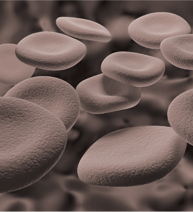


|
These conditions fall under the broader heading of chronic vascular insufficiency. In a minority of instances raised venous pressure (venous hypertension) may be associated, which can be determined by a simple non-invasive Doppler screen. The GP usually prescribes hydroxyethylrutosides and/or the use of compression stockings for varicose veins, but these should not be used if the in-flow pressure ratio of the ankle or foot to that in the arm is low. An article in the BMJ gives reliable information on the symptoms and orthodox treatment of varicose veins [Br Med J, 2000, 320:1391-1394]. |
|
Varicose veins become more frequent with age. It is six times more frequent in the over-60s than in those aged 30. There is little difference between the sexes. Height and overweight do not play as important a role as is often assumed, but occupations requiring much standing do make people more disposed to the condition. Sophisticated studies have shown that haemorrhoids are not merely a matter of venous congestion, but that there are connexions with the arterial system. It will probably not surprise anyone to learn that reading on the toilet can give you haemorrhoids, and there is a published study to prove it, too [Lancet, 1989, I; 8628:54]. Researchers at the John Radcliffe Hospital, Oxford, compared the habits of 100 people suffering from haemorrhoids with 100 unaffected individuals and found that a much larger proportion of the group suffering from piles reads on the loo. It's not the reading that's bad for you; but sitting on the lavatory for extended periods causes undue pressure on your bottom, say the Oxford doctors. Associated with such vascular insufficiency there may be nutritional defects, or food hypersensitivities, or hormonal imbalances (for example pregnancy can often trigger either varicosities or haemorrhoids, or both). There may be other causes which the clinician should investigate and, if possible, help correct. Naturopathic medicine has long used hydrotherapy for varicose veins. The results of a placebo-controlled randomized clinical trial involving 122 patients in which applications of cold water (12-18℃) followed by warm (35-38℃) for 10 minutes daily during 24 consecutive days produced a decrease in foot volume, as well as ankle and calf circumference [Eur J Phys Med Rehabil, 1993, 3:123-124]. In another trial thermal mineral water containing carbon dioxide produced a marked improvement in venous function after 20 minutes of bathing compared with baseline [Phys Med Rehabil Kurortmedizin, 1993, 3:153-157]. Bilberries (Vaccinium myrtillus) are added to the daily diet of pregnant women to prevent and treat varicose veins of pregnancy [Minerva Ginecol, 1981, 33:221-230]. Nutritional medicine prescribes bromelain obtained from the stem of the pineapple plant (Ananas comosus) as an adjunct to treating thrombophlebitis [Angiology, 1969, 20:22-26] and to treat varicose veins [Praxis, 1972, 61:950-951]. For those patients known to deficient in vitamins C or E, supplementation with these vitamins has shown positive results in treating vascular and capillary fragility [for vit C: Am J Clin Nutr, 1981, 34(5):871-876; for vit E: J Vitaminology, 1972, 18:125-130]. Three groups of flavonoids have a long history in the reliably successful treatment of varicose veins and varicose ulcers. They are rutin, hesperidin and the anthocyanosides (bilberries are a rich source for these last flavonoids) [for rutin: Am J Ophthalomol, 1948, 31:671-678; for hesperidin: Del State Med J, January 1959, pp 19-22; for anthocyanosides: Minerva Med, 1977, 68(52):3565-3581]. Botanical medicine has three popular remedies for the treatment of varicose veins, which have demonstrated their success. The Pennywort (Hydrocotyle asiatica a/k/a Centella asiatica) in a clinical placebo-controlled randomized trial, involving 94 patients who received 120mg titrated extract of Pennywort daily for two months, produced significant beneficial effect in reducing oedema and symptoms of heaviness in the lower legs, compared with placebo [Angiology, 1987, 38:46-50]. These results are corroborated by another double-blind trial in which a daily dose of 60mg of titrated extract of Pennywort for 30 consecutive days significantly improved the itchy sensation, oedema, and night cramps, compared with placebo [Clin Ther, 1981, 99:507-513]. Treatment with red vine leaf extract (Vitis vinifera) in a large double-blind study involving 260 patients with chronic venous insufficiency over a 12 week period reported a reduction in lower leg volume and calf circumference compared with placebo [Arzneimittelforschung, 2000, 50:109-117]. However, the favoured oral treatment in herbal medicine is with Horse-chestnut (Aesculus hippocastanum). A systematic review of 13 randomized controlled trials, involving 1083 patients provides compelling placebo-controlled evidence for the effectiveness of this treatment in all forms of chronic venous insufficiency, even when it was compared with compression therapy and with hydroxyethylrutosides (derived from rutin), as it was in some of the 13 trials reviewed [Arch Dermatol, 1988, 134:1356-1360]. For persistent haemorrhoids I prescribe an ointment that is specially made up by an homoeopathic pharmacy. I find this to be a thoroughly reliable combination remedy. Its formula is: Paeonia officinalis 1DH 12 g; Sedum acre 1DH 0,56 g; Ratanhia 1DH 0,56 g; Aesculus hippocastanum 1DH 0,56 g; Vaseline q.s.p. 100g. This could also be made up in suppository form. |
|